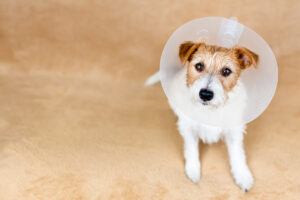
There are significant dangers when ignoring post-operative instructions after veterinary surgery.
When your pet undergoes surgery, whether it’s a routine spay/neuter or a more complex procedure, your veterinarian provides post-operative instructions for a reason. These directions are carefully designed to ensure proper healing, prevent infection, and minimize complications. Ignoring post-operative instructions can have serious — even life-threatening — consequences for your beloved pet.
Why Post-Operative Instructions Are So Important
After surgery, your pet’s body is in a fragile state. Stitches, incisions, and internal healing require time and care. Post-operative instructions typically include details on pain management, activity restrictions, feeding schedules, wound care, and signs of potential complications. Following these directions helps your pet heal properly and reduces the risk of setbacks that could require additional treatment or surgery.
The Risks of Ignoring Post-Operative Instructions
Ignoring post-operative instructions might seem harmless at first, but even small lapses can quickly turn into major problems. Here are some of the most common risks:
Infection
When surgical wounds aren’t kept clean or dry, bacteria can enter and cause infection. This can lead to swelling, pain, pus, and fever — all of which delay recovery and may require antibiotics or further medical intervention.
Wound Dehiscence (Opening of the Incision)
Excessive movement, jumping, or licking can cause stitches to break or incisions to reopen. This not only sets back healing but may necessitate another surgical procedure to close the wound properly.
Internal Complications
Certain surgeries involve delicate internal work, such as abdominal or orthopedic procedures. If a pet resumes normal activity too soon, it can cause internal bleeding, torn sutures, or dislodged implants, leading to severe pain or even emergency situations.
Pain and Delayed Healing
Failure to administer prescribed pain medication or follow dosage instructions can leave your pet in unnecessary discomfort. Pain and stress slow down healing, making recovery longer and more difficult.
How Pet Owners Can Support a Smooth Recovery
To avoid complications, pet owners should:
- Follow all instructions carefully. Keep written directions from your veterinarian handy for reference.
- Administer medication as prescribed. Stay consistent with pain relievers and antibiotics to prevent discomfort and infection.
- Limit activity. Use leashes or crates when needed to prevent jumping, running, or rough play.
- Monitor the incision. Check daily for redness, swelling, or discharge, and contact your vet immediately if something looks abnormal.
- Use protective devices. E-collars (cones) or medical shirts prevent pets from licking or chewing at wounds.
Don’t Take Shortcuts — Your Pet’s Health Depends On It
Ignoring post-operative instructions may seem harmless in the moment, but it can lead to painful, expensive, and preventable complications. By diligently following your veterinarian’s advice, you’re giving your pet the best possible chance at a safe, smooth, and comfortable recovery.
Your pet relies on you for care, protection, and love — especially after surgery. When you follow every step of their recovery plan, you’re helping ensure they heal quickly and get back to feeling their best.
Trust Maryland Veterinary Surgical Services With Your Companion’s Health
Your companion’s health is important, and the team at MVSS is ready to provide the best care possible for your furry family. We are dedicated to combining comprehensive exams and assessments with informative and honest discussions of your companion’s care. Once we have worked with you to decide on the best course of action for your dog, our professionals will use their surgical expertise to work towards the goal of giving your companion an active and pain-free life. We are proud to serve loyal companions in Catonsville and Baltimore. To learn more about our services, give us a call at 410-788-4088 or visit us online. For more information and tips for dog health, follow us on Facebook and Pinterest.
